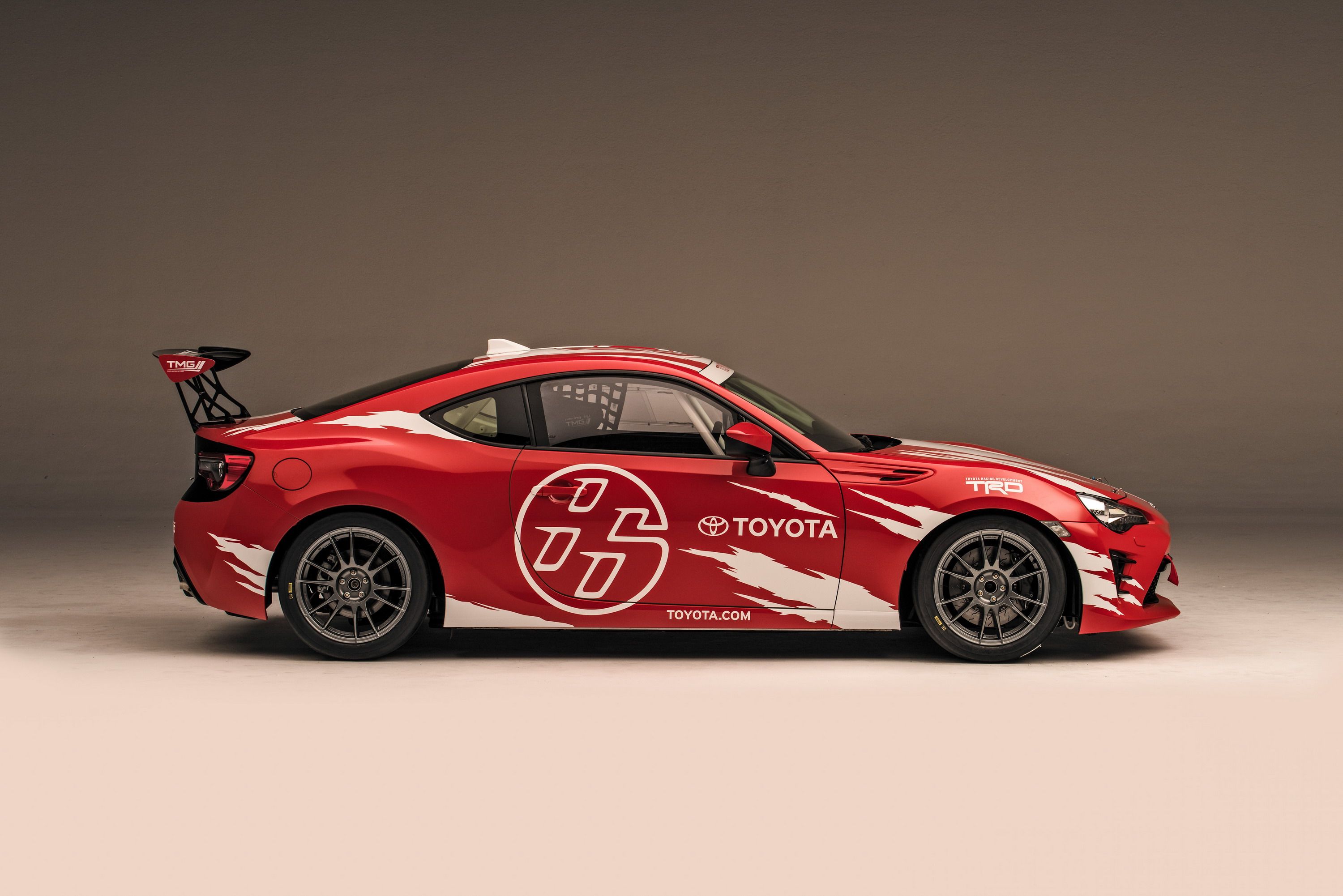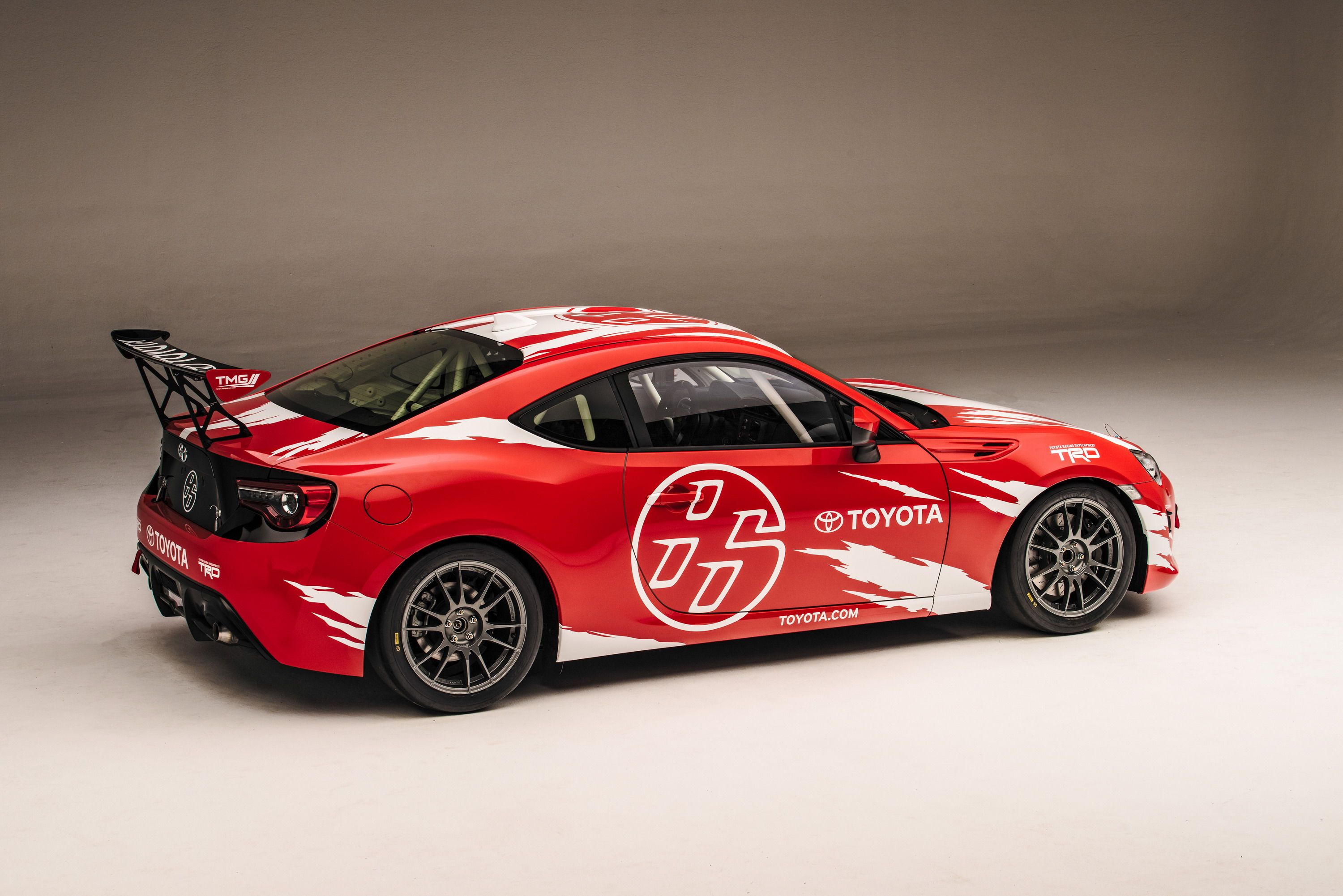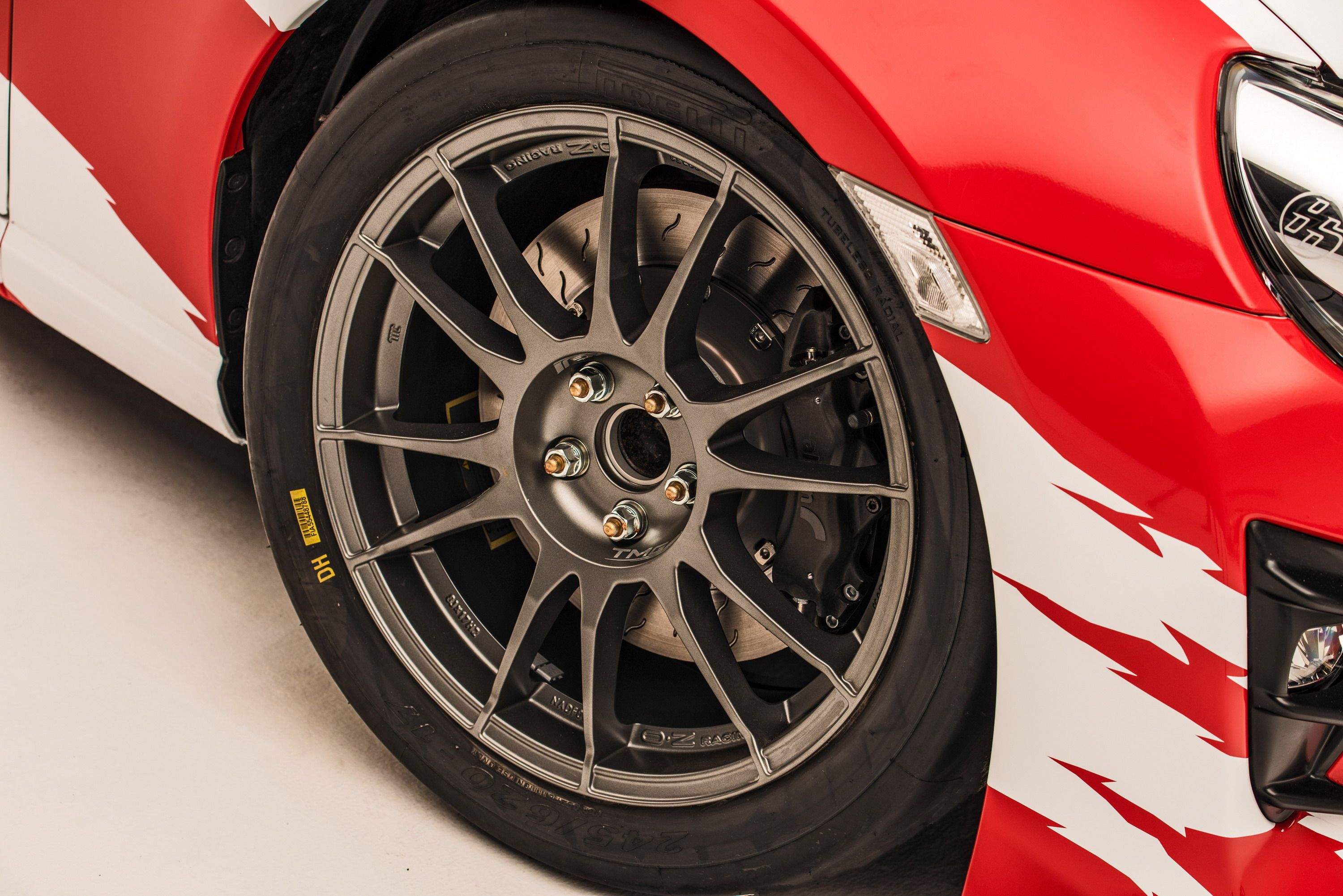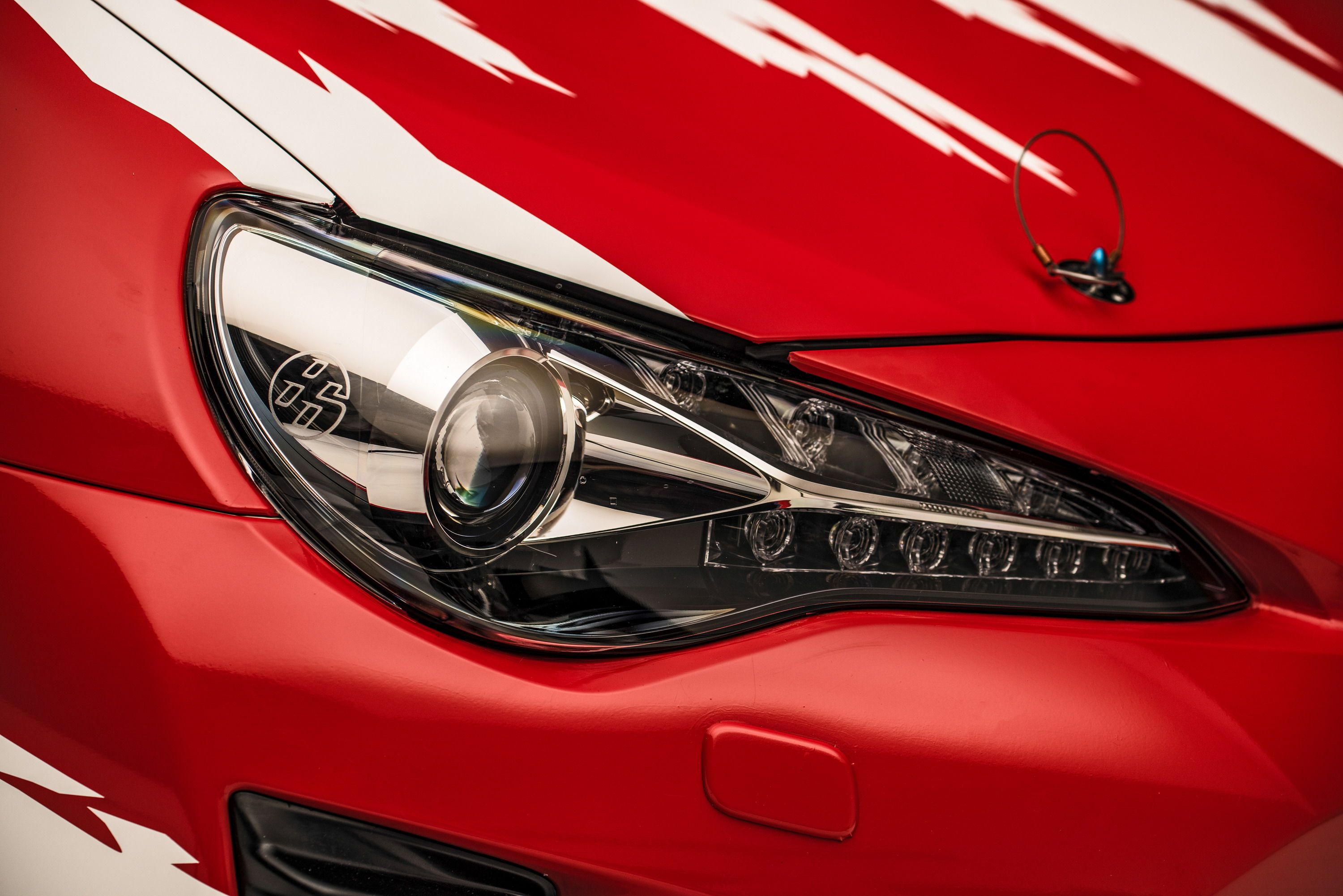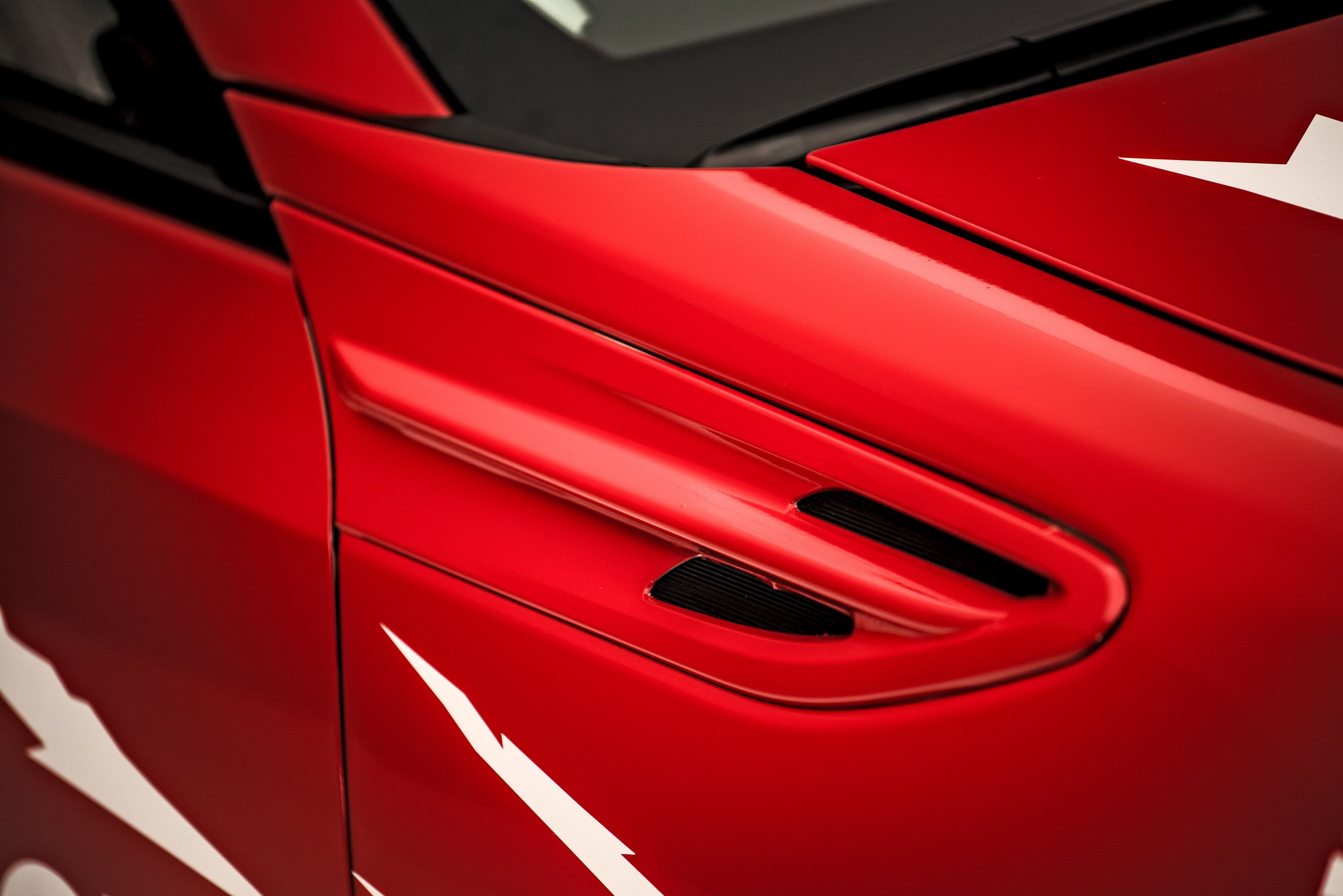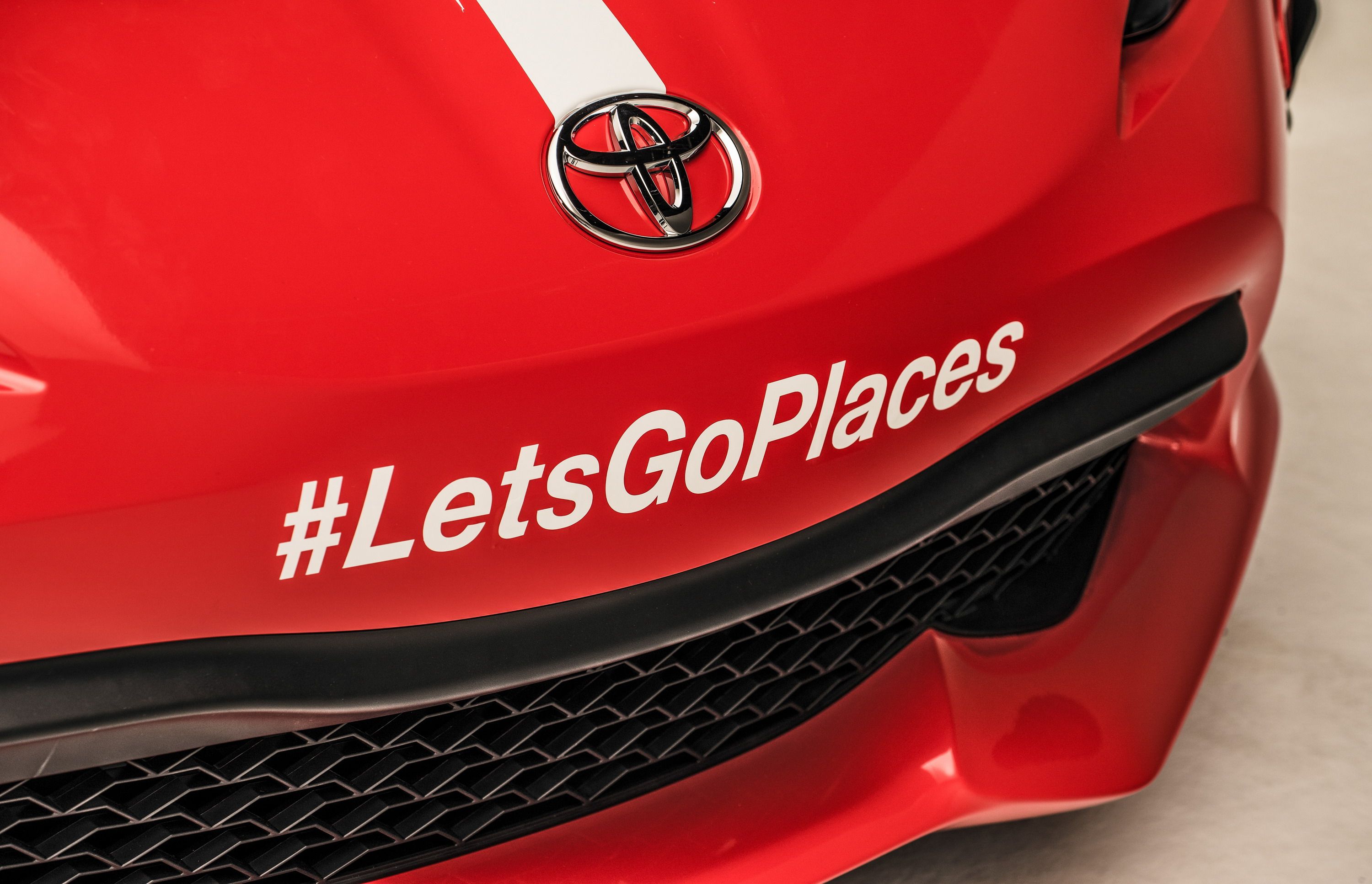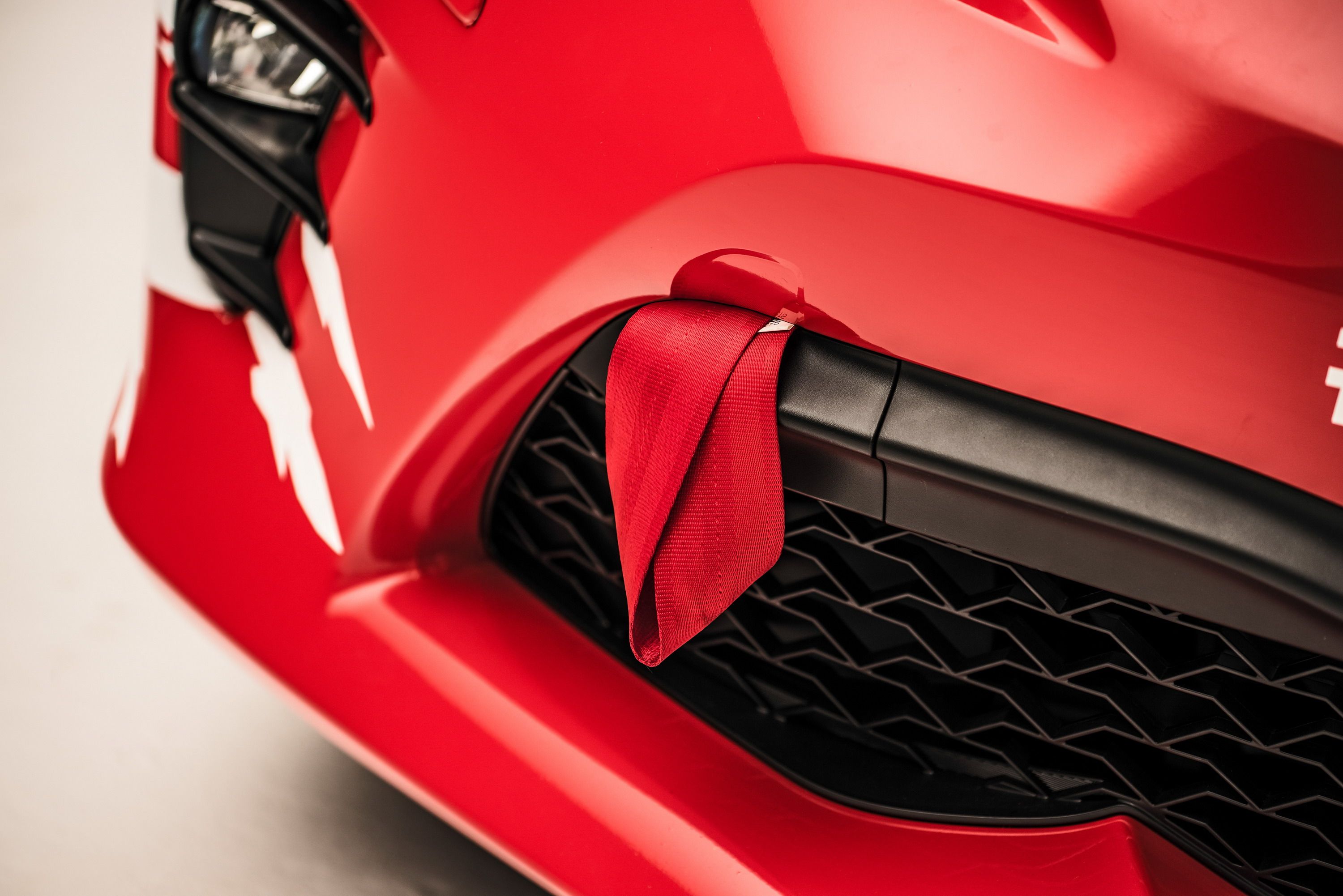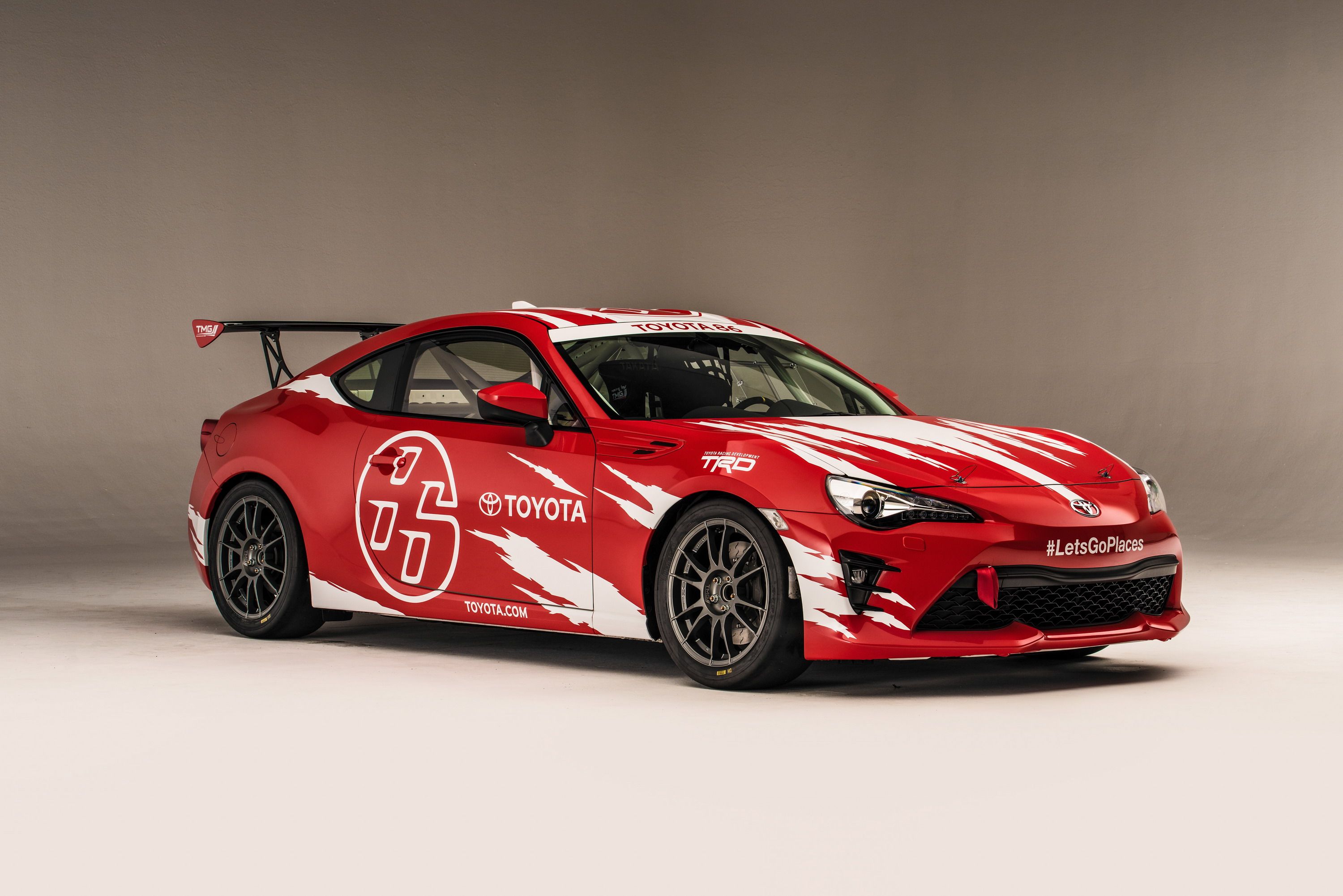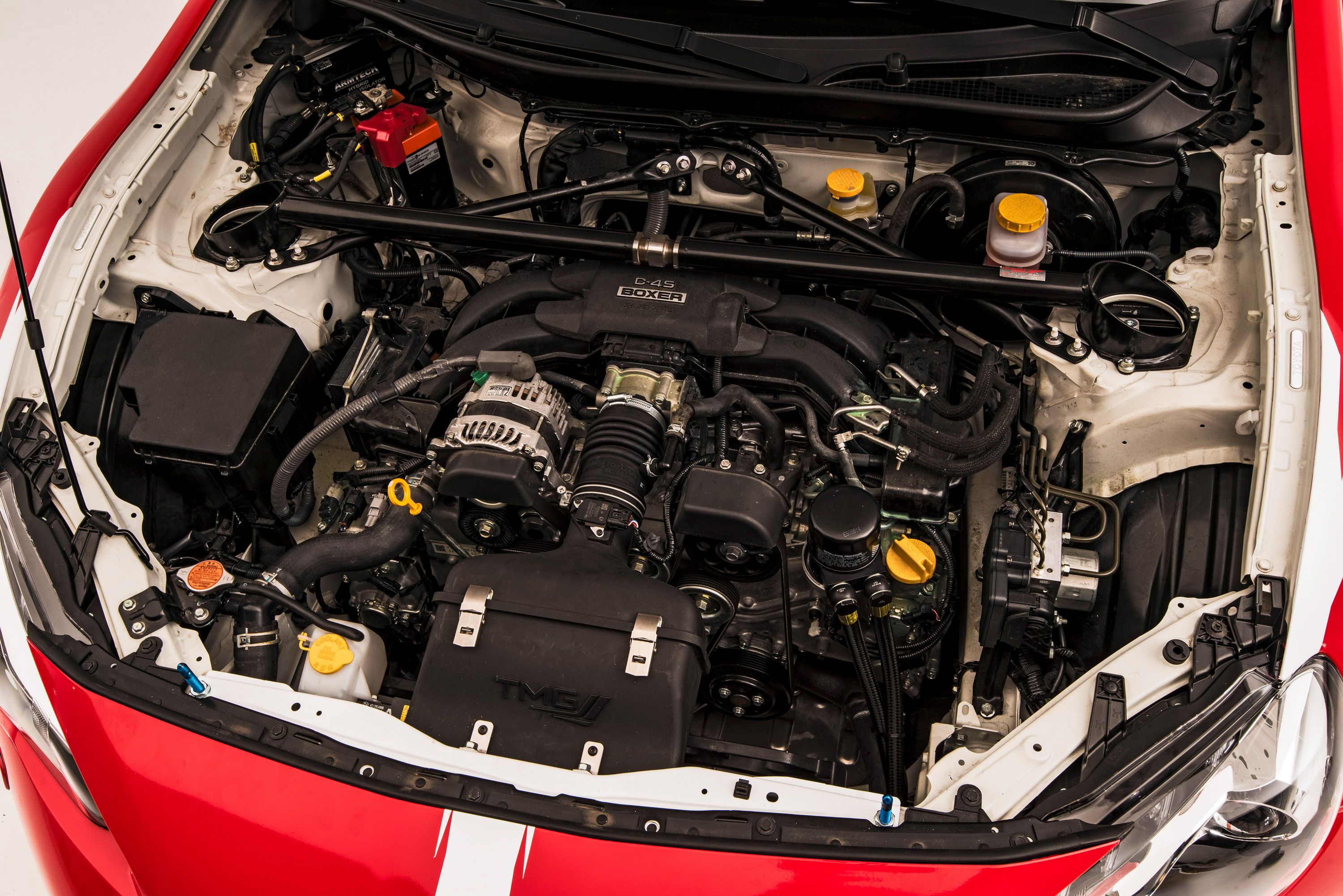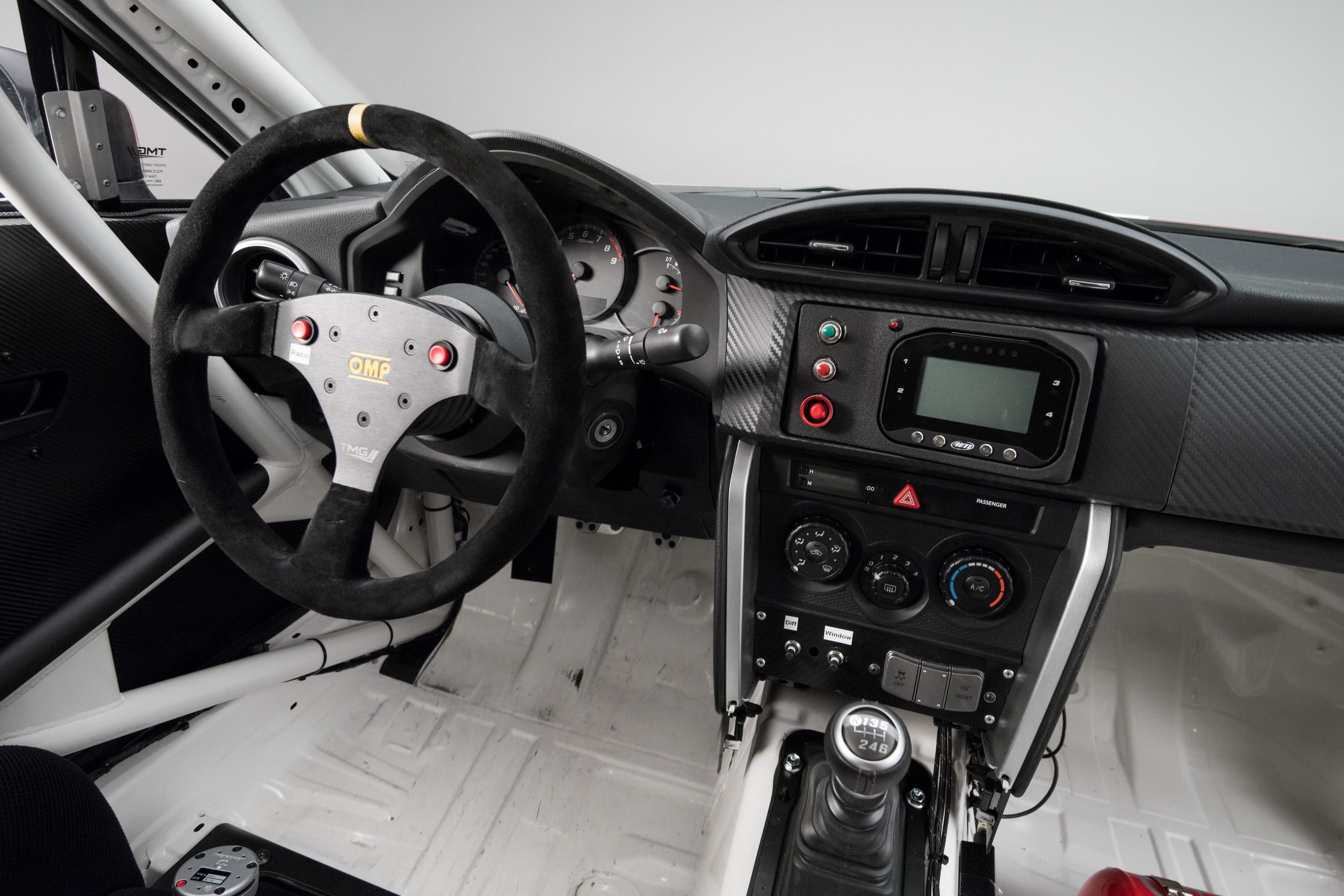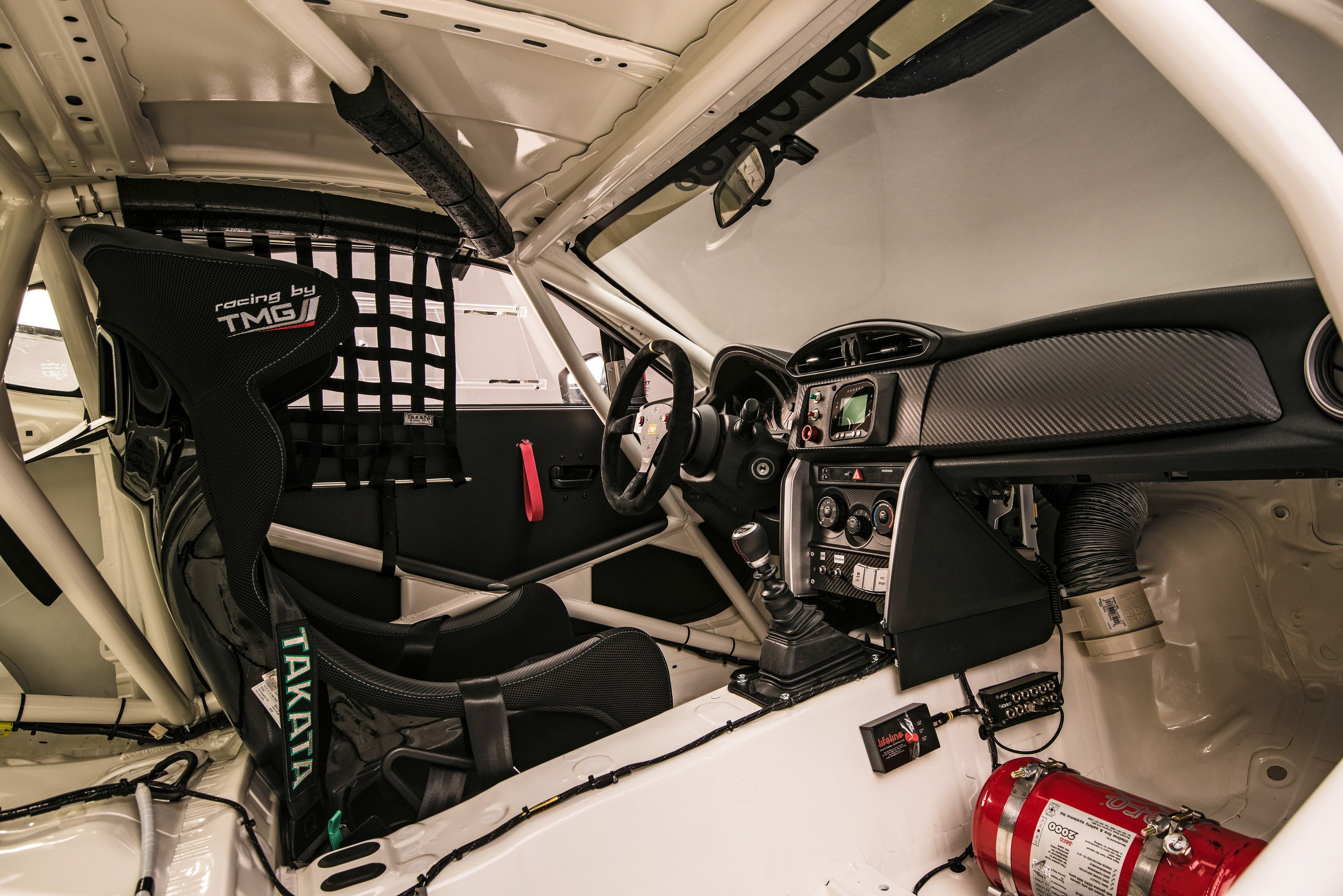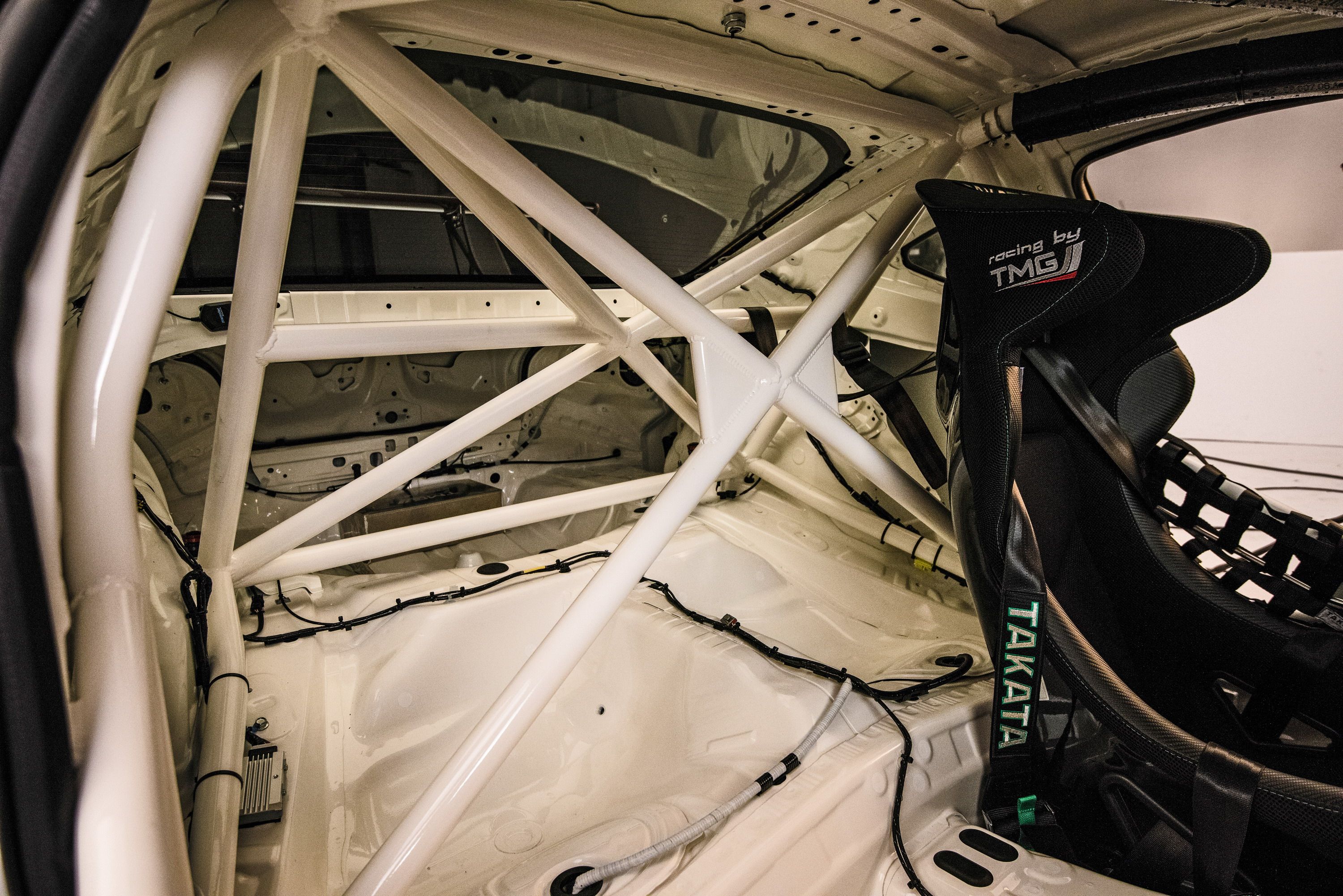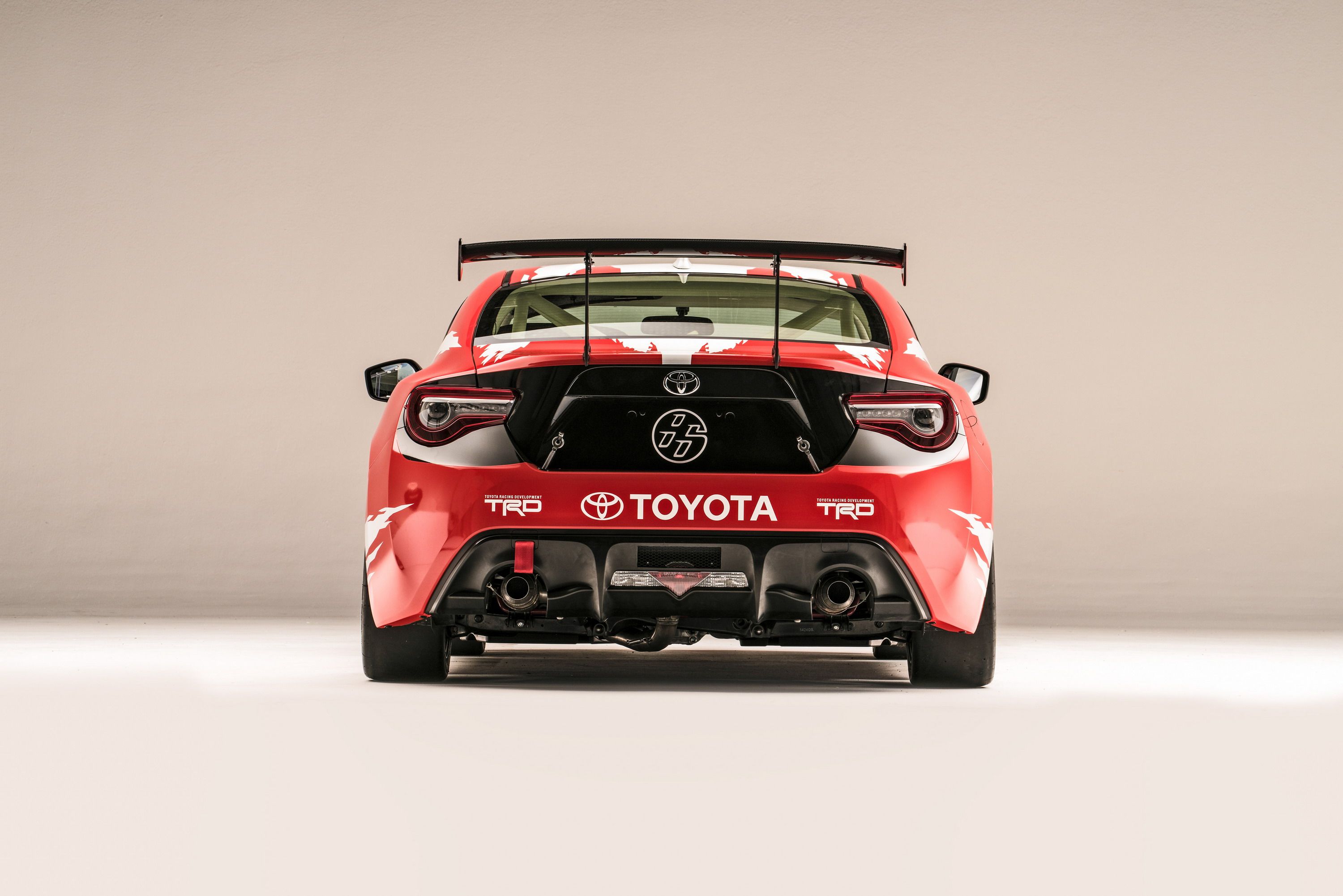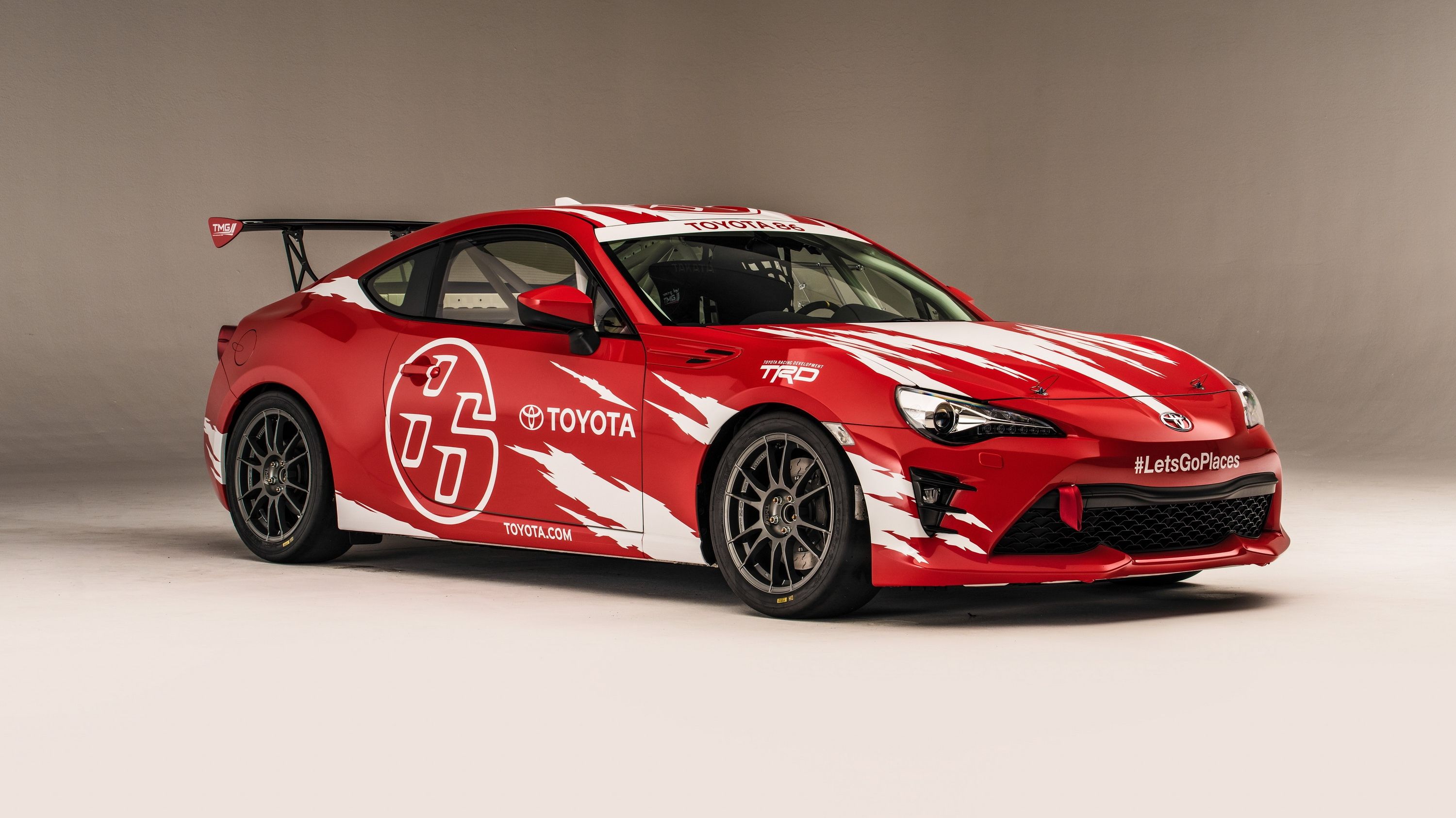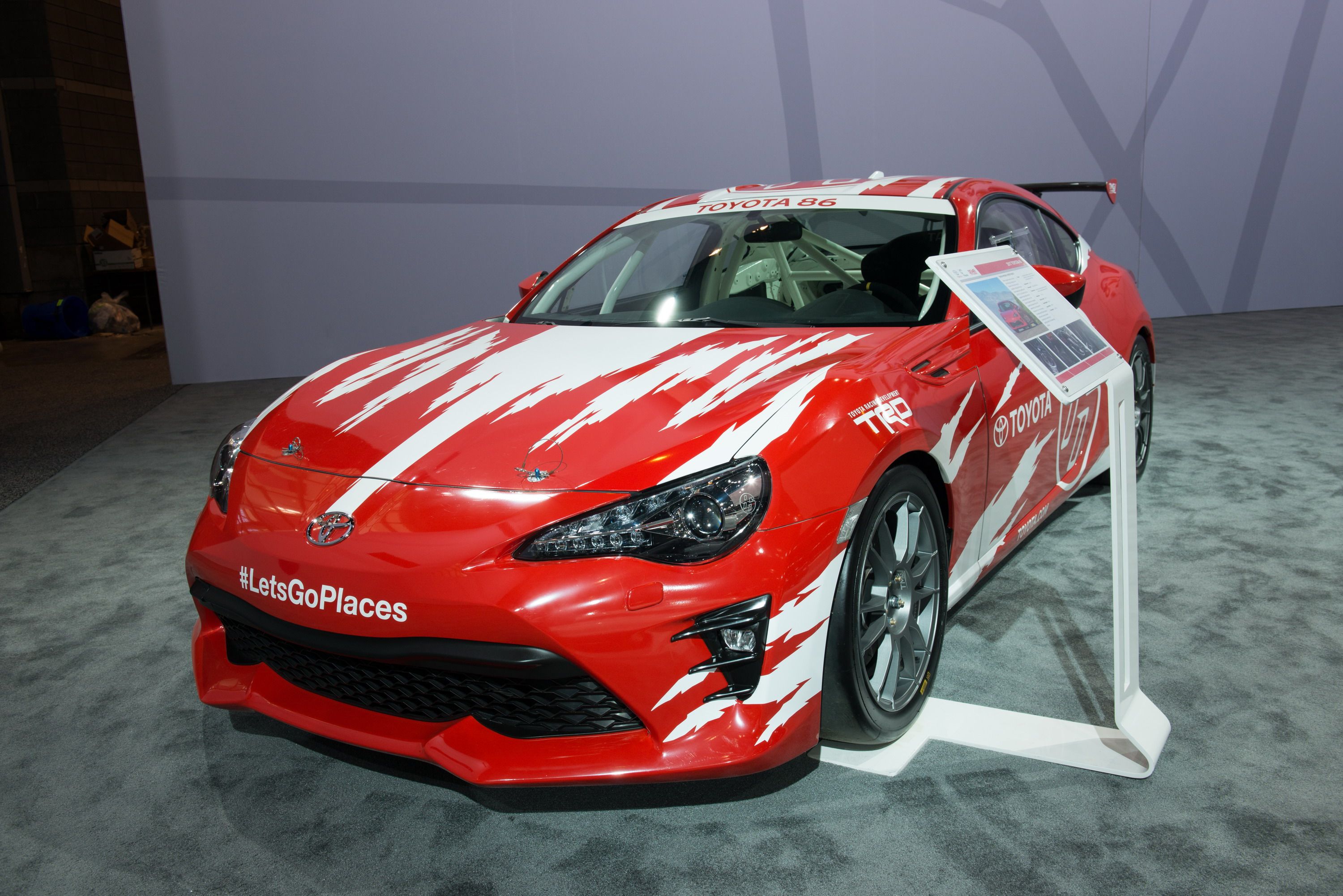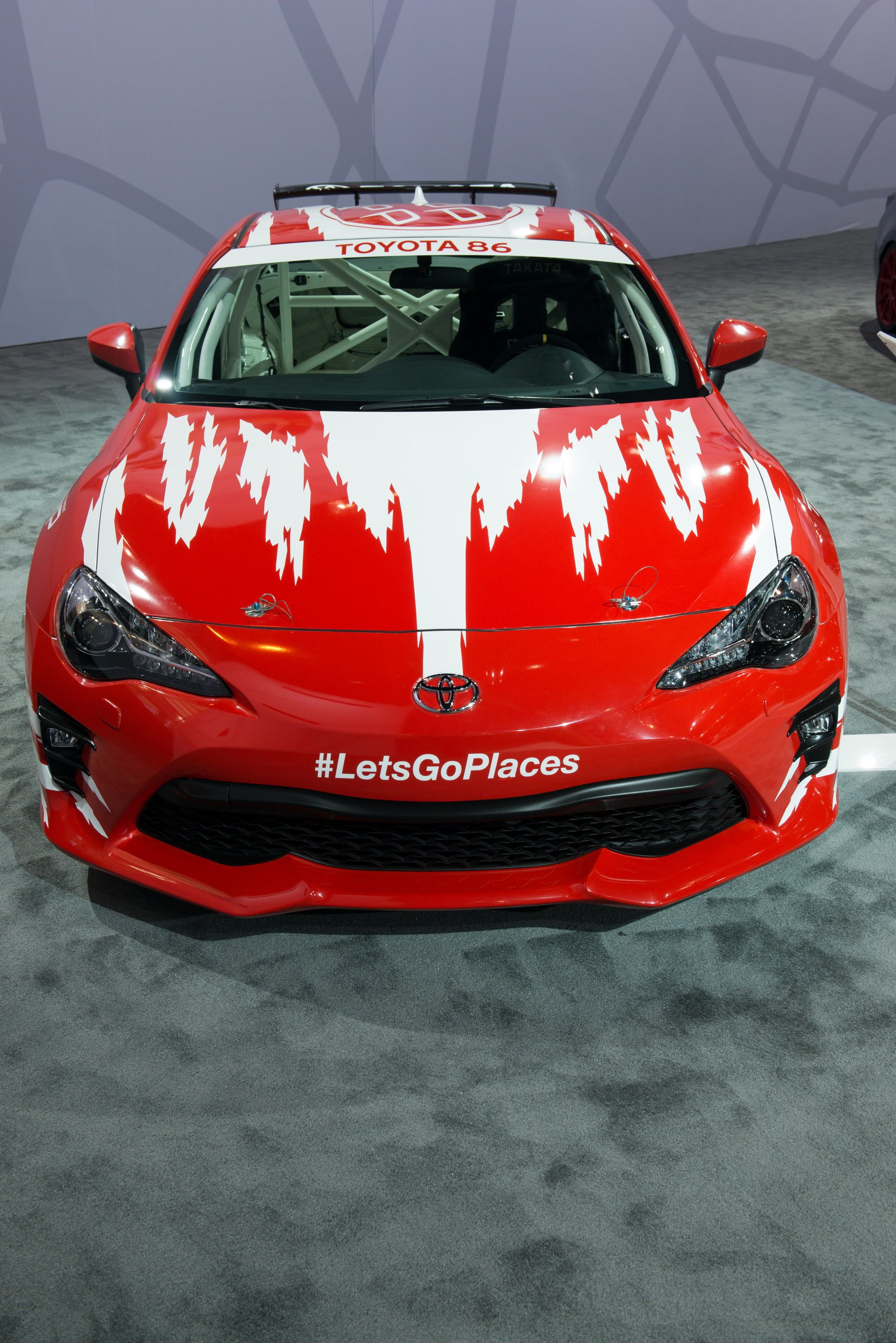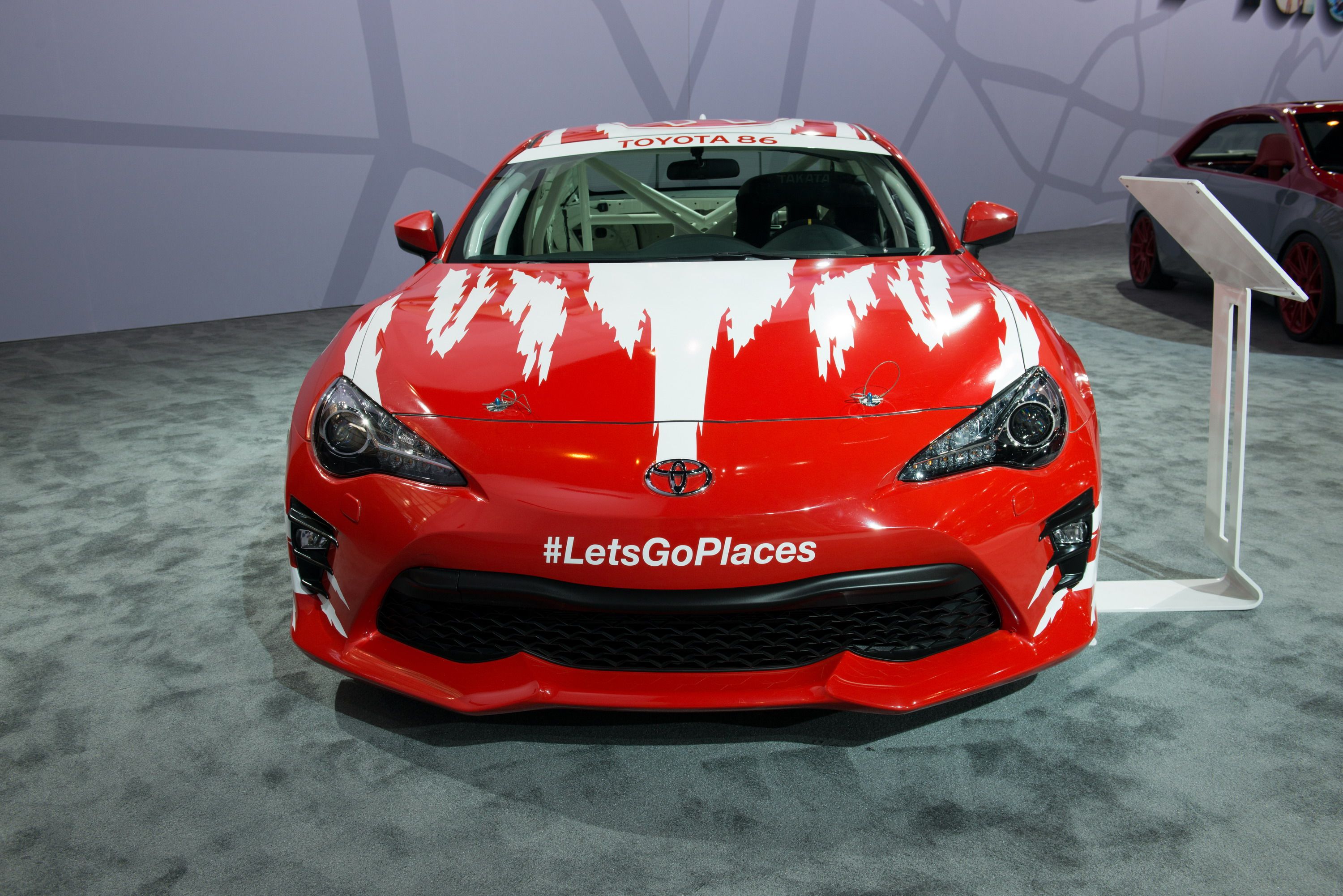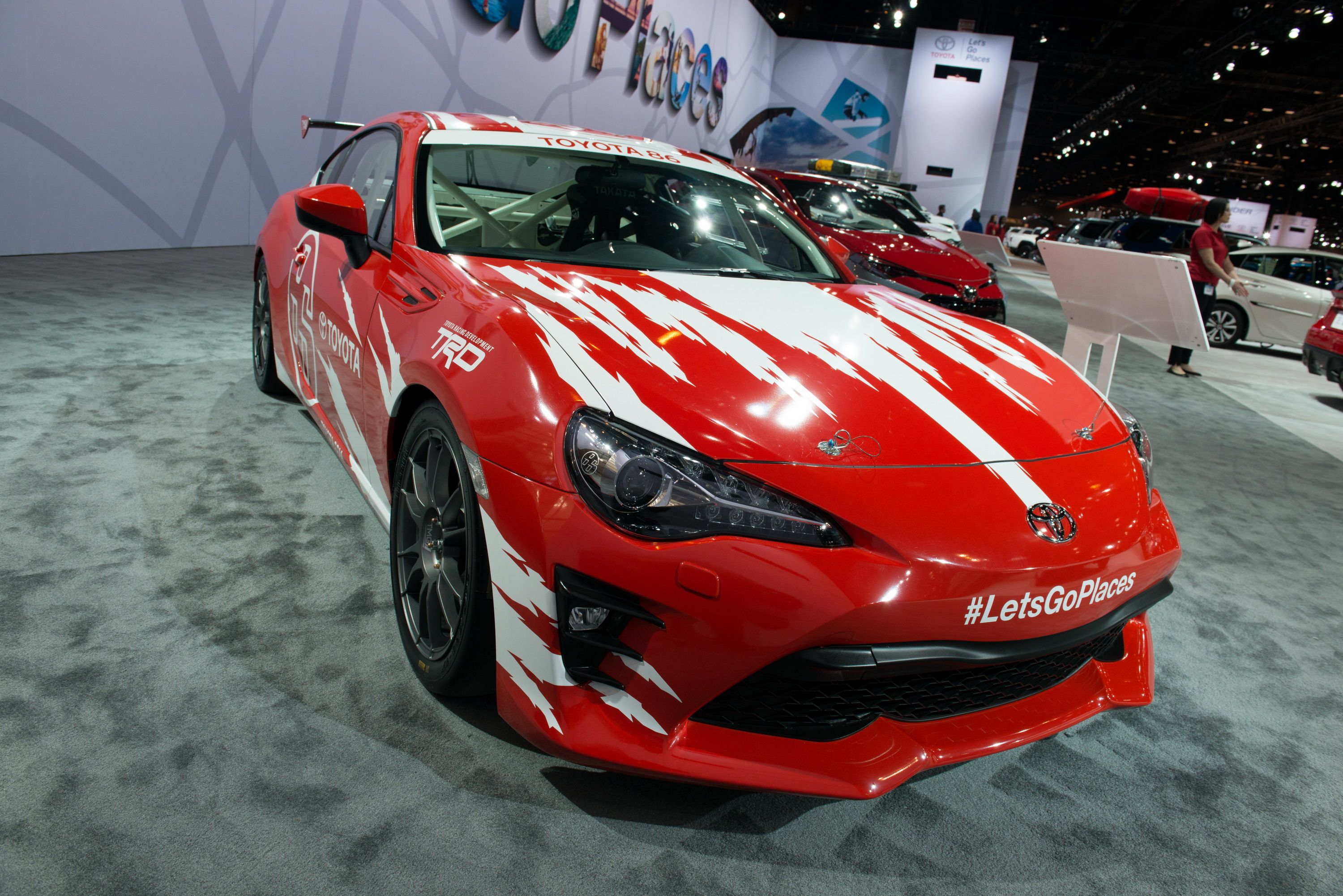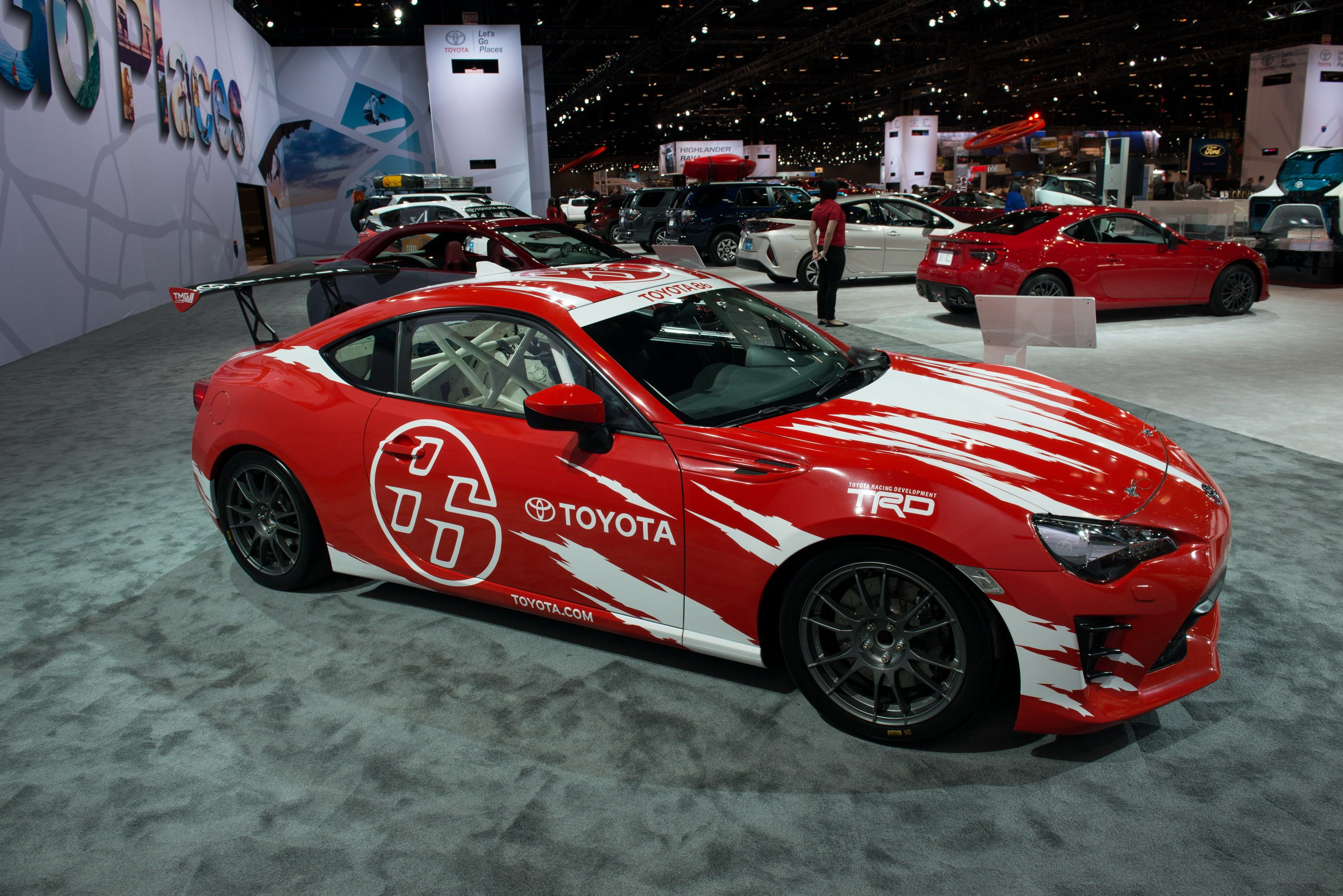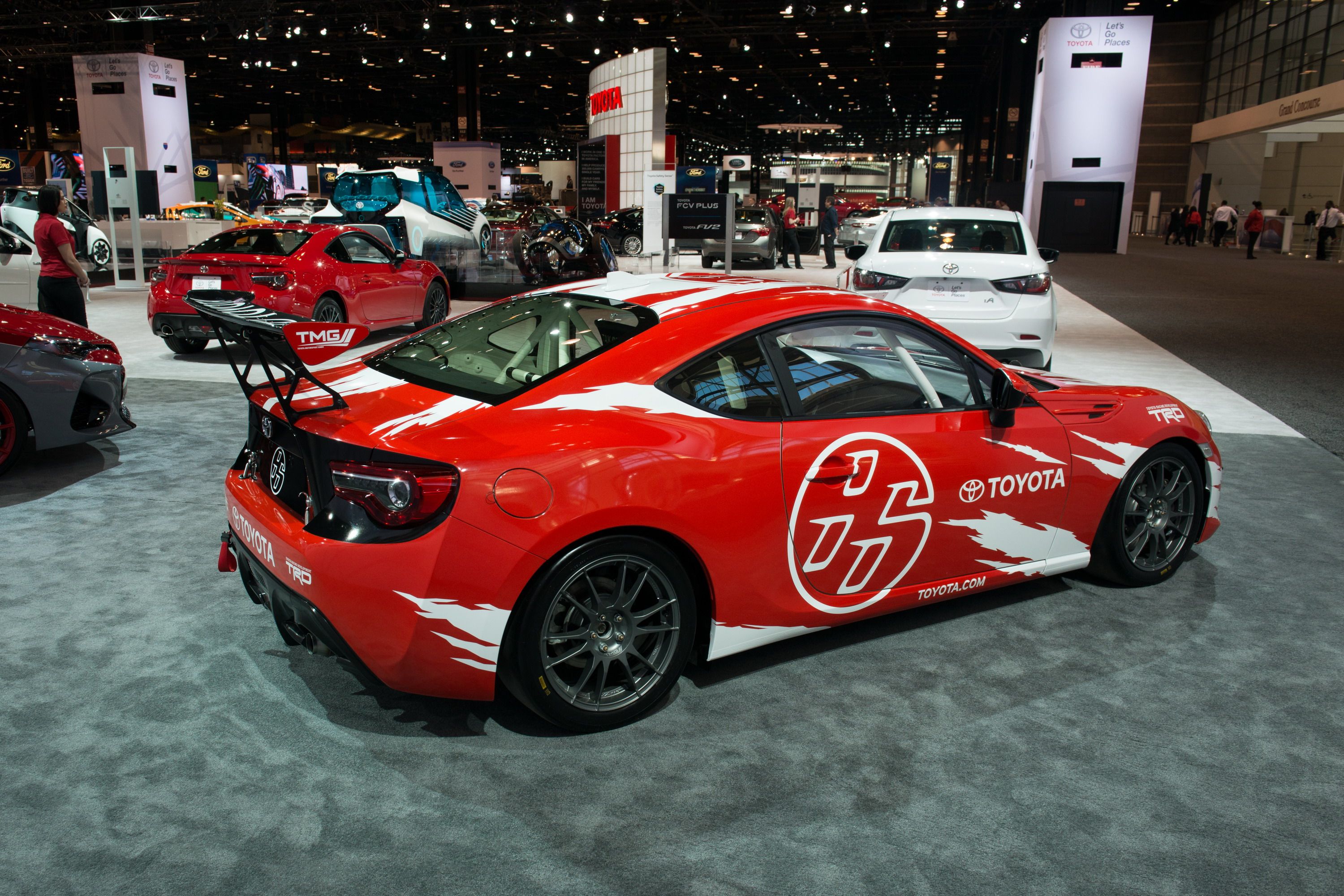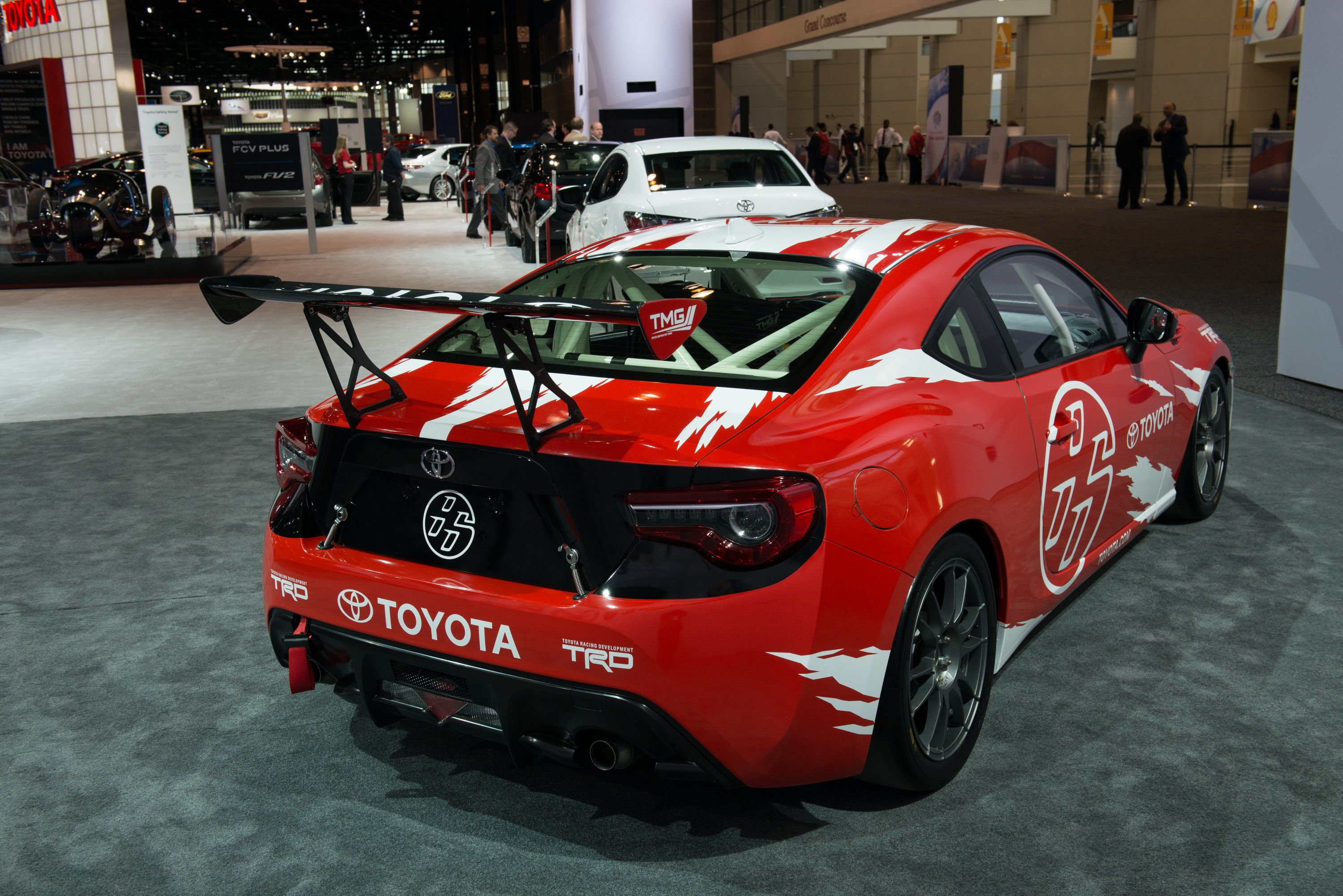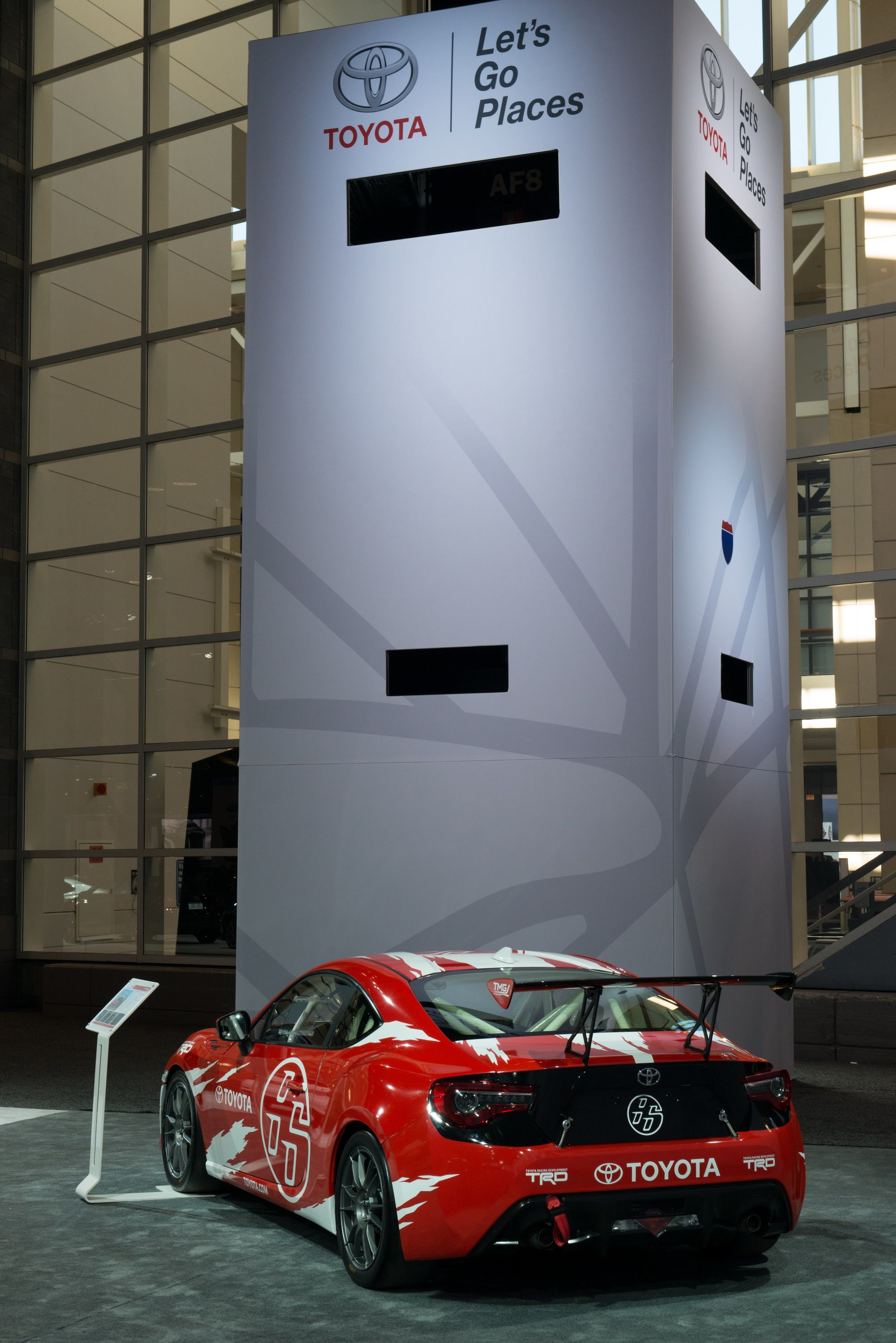The Toyota GT86 -- also known as the 86 in North America and Asia -- was launched in early 2012 as a two-door sports car of fairly compact dimensions. The result of a collaboration between Toyota and Subaru, the coupe was originally sold under three brands: the Toyota 86, Subaru BRZ, Scion FR-S (the latter was discontinued in 2016). The sports car is available with just one engine, a 2.0-liter boxer provided by Subaru, the same company that manufactures the GT86 in Japan. Received with great enthusiasm and awarded with several titles in 2012, the GT86 was criticized in recent years for the lack of drivetrain upgrades and a turbocharged engine. Although Toyota gave the GT86 a mid-cycle facelift for 2017, the drivetrain carried over unchanged save for the additional five horsepower and five pound-feet of torque added by the revised manual transmission.
At the 2016 SEMA Show, Toyota finally unveiled a more powerful version of the GT86, dubbed CS-Cup, developed by its Motorsport division. However, the vehicle wasn't designed as a road-going production model, but for a one-make racing series in Japan. What's it doing at the SEMA Show, you ask? Well, the company said it "wanted to bring it here to inspire, innovate, and excite." Needless to say, the CS-Cup arrival on U.S. soil was pretty exciting, but it quickly became upsetting at the thought that Toyota still doesn't want to give us a higher performance model.
We can still dream though...
Back to car in question, the CS-Cup is the third race-spec GT86 is a series of vehicles that came to life in 2012, when Toyota Motorsport launched the CS-V3 VLN. It was followed by the CS-R3 rally car in 2015, and now the CS-Cup. Let's find out more about it in the review below.
Continue reading to learn more about the Toyota Motorsport GT86 CS-Cup.
2017 Toyota Motorsport GT86 CS-Cup
- Make: Array
- Model: 2017 Toyota Motorsport GT86 CS-Cup
- [do not use] Vehicle Model: Array
Exterior
The CS-Cup race car is far from being a radical departure from the road-going model, but it did receive a few aerodynamic upgrades for increased downforce and better handling. Up front, changes are minor, with the engine hood, nose, and bumper remaining unchanged compared to the standard coupe. The only modifications we can speak of are the quick-release pins on the hood and the towing hook in the bumper. Onto the side, changes are limited to a new set of lightweight wheels finished in gray and wrapped in racing tires.
It's around back where the GT 86 received more race-spec features, including a big wing and a revised diffuser. The latter is still shaped like the standard unit, but include an extra vent in the middle, new exhaust pipes, and a towing hook. The trunk lid is also fitted with spring quick-release pins, while the license plate recess is covered by a panel. Other modifications include a lower ride height and a retro-inspired, red-and-white livery that pays homage to Toyota's racing heritage. Needless to say, I would've like for this race-spec GT 86 to sport a more aggressive body kit in the lower section, but I have to admit that it looks pretty cool.
Interior
Toyota didn't have much to say about the interior, but the photos reveal some pretty extreme modifications. The dashboard is the only element that still mimics the stock component, but now features carbon-fiber elements and a revised center console. The instrument cluster appears to be stock, but the three-spoke steering wheel was built with racing in mind, being wrapped in Alcantara for extra grip and featuring a yellow stripe at the 12 o'clock position.
The door panels were also replaced with carbon-fiber elements, while the insulation on the pillars, the headliner, and the floor mats were removed altogether for weight-saving purposes. Toyota Motorsport also added an FIA-certified rollcage, a full-blown racing seat with Takata six-point safety belt, an FIA-approved electronic fire-extinguishing system, an electronic master switch system, and a safety window grid. Needless to say, the GT 86 CS-Cup is ready to race any FIA event and not just a one-make series.
Drivetrain
The CS-Cup gets its juice from the same turbocharged, 2.0-liter boxer engine in the standard road car, but a remapped ECU increased the output to 212 horsepower and 162 pound-feet of torque. Granted, that's only seven horsepower and 11 pound-feet more than the road-going GT 86, but you're looking at a vehicle that's some 600 pounds lighter than the car it is based on. The lighter curb weight and the revised aerodynamics should make a big difference in terms of acceleration. While the standard model needs more than seven seconds to hit 60 mph from a standing start, the CS-Cup will probably reach the same benchmark in around six.
Besides remapping and the extra power, the race car also received a a new TMG exhaust system that uses two FIA Motorsport catalyzers. The chassis also received many upgrades, including two-way adjustable Bilstein shocks, Eibach springs, and Eibach sway bars. Behind the O-Z Racing wheels lurk PFC brake pads, stainless-steel brake lines, and a TMG cooling system, while the front calipers were replacing by Alcon four-piston racing units.
|
Toyota 86 6-Speed Manual |
Toyota 86 6-Speed Automatic |
Toyota GT86 CS-Cup |
|
|
Engine |
2.0-Liter 4-Cylinder Horizontally Opposed Engine |
2.0-Liter 4-Cylinder Horizontally Opposed Engine |
turbocharged, 2.0-liter boxer engine |
|
Horsepower |
200 HP @ 7,000 RPM |
200 HP @ 7,000 RPM |
212 HP |
|
Torque |
151 LB-FT @ 6,400-6,600 RPM |
151 LB-FT @ 6,400-6,600 RPM |
612 LB-FT |
|
Fuel consumption city/highway/combined |
21/28/24 |
24/32/27 |
- |
|
0 to 60 mph |
7.6 seconds |
8.2 seconds |
6 seconds (est.) |
|
Top Speed |
140 MPH |
140 MPH |
- |
Conclusion
As much as I'd like to leave "shut up and take my money!" as the only note in this section, the fact that this vehicle is not legal for public roads and not available in dealerships prevents me from doing so. Indeed, the CS-Cup can be purchased by privateers, but only for racing purposes in the one-make series it was designed for. And last time I checked, I'm not a race car driver. Granted, this car will make a lot of enthusiasts happy, but at the same time it will leave GT 86 fans that can't go racing wanting more. All told, the CS-Cup is the kind of vehicle Toyota should consider for production in road-legal specification.


